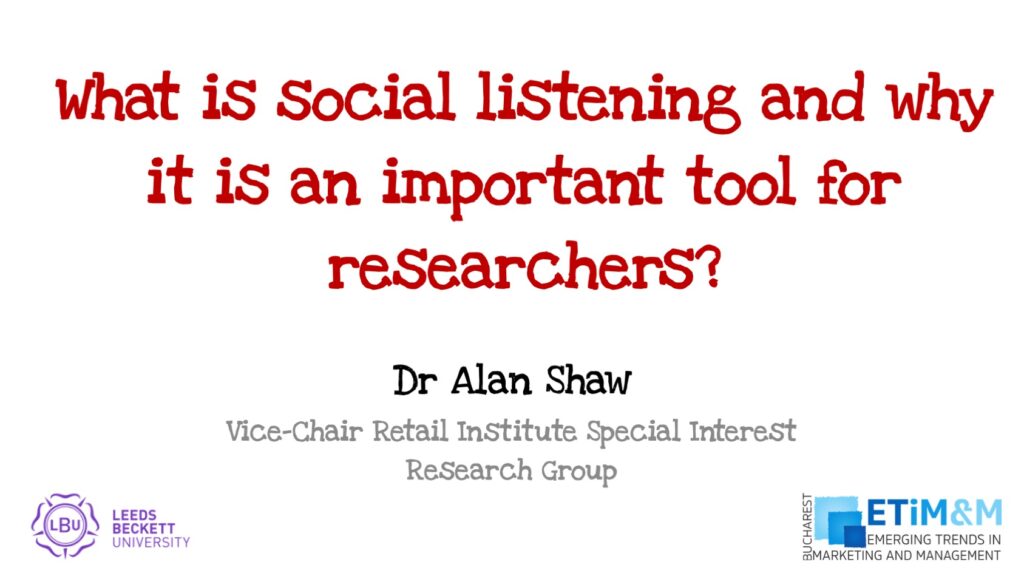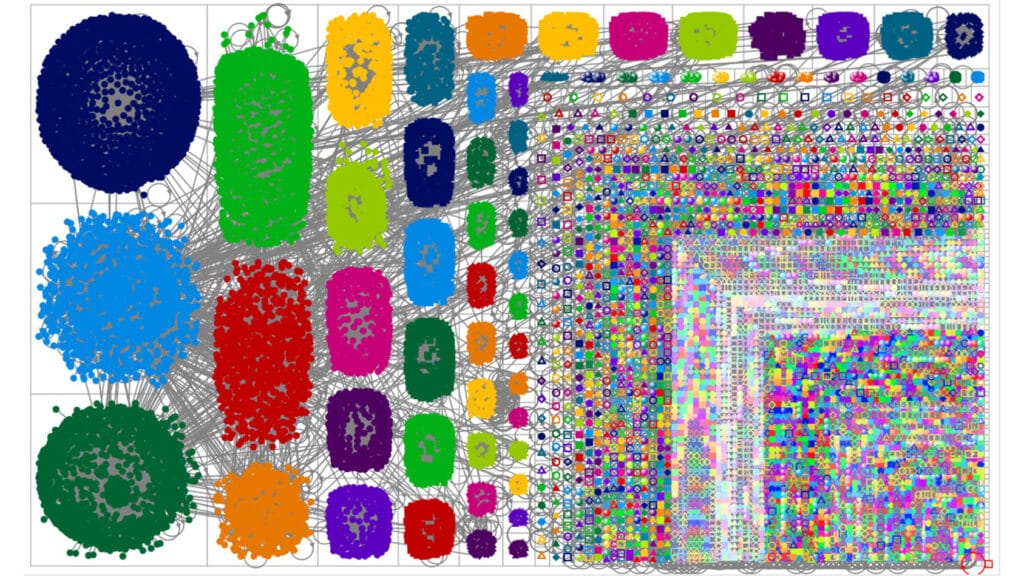
This is the first in a series of blogs that will focus on understanding the concepts of eigenvector centrality and pagerank when used in Gephi. The first blog will provide you with an overview of the two concepts. I will then give you an example of how it is used to find potential influencers using real data. I will end by furnishing you with an overview of how to calculate the values.
I have also created an explainer video for each blog, the first can be seen below:
Eigenvector centrality
Eigenvector centrality is used to measure the level of influence of a node within a network. Each node within the network will be given a score or value: the higher the score the greater the level of influence within the network. This score is relative to the number of connections a node will have to other nodes. Connections to high-scoring eigenvector centrality nodes contribute more to the score of the node than equal connections to low-scoring nodes.
To put this into context, a node with a high degree score (i.e. many connections) may only have a relatively low eigenvector centrality score because many of those connections are with similarly low-scored nodes. Also, a node may have a high betweenness score (indicating it connects disparate parts of a network) but a low Eigenvector Centrality score because it’s still some distance from the centres of power in the network.
You would use eigenvector centrality to identify who or what has a wide-reaching influence within a given network.
The Pagerank
The pagerank is a variant of the Eigenvector centrality score, but because it uses backlinks/in-degrees it is used in directed networks. That said, there are no “hard or fast” rules stating you can only use pagerank when analysing directed networks, eigenvector centrality will work, but you will need to justify your answer. It does however make no sense in using pagerank scores in undirected networks. It should be noted that Gephi offers you the option for calculating pageranks for undirected networks: I personally ignore this.
Like eigenvector centrality, the pagerank can be considered as the “importance score” of a web page or social network node. This importance score will always be a non-negative real number and all the scores will add to 1, sometimes it might be presented as a percentage (not Gephi). This score is based on the links made to that page/node from other pages/nodes. The links to a given page/nodes are called the backlinks/in-degrees for that page/node. The web/social network thus becomes a democracy where pages/nodes vote for the importance of other pages by linking to them.
The embedded video (above) gives you simple examples of the various scores using simple models to help you fully understand the concepts. Next month I will illustrate the concepts using a real-life example.
Alan Shaw
Latest posts by Alan Shaw (see all)
- What is social listening and why it is an important tool for researchers? - July 31, 2021
- COVID-19 and Remote Learning: Experiences of parents supporting children with SEND during the pandemic. - June 30, 2021
- Using Netnography To Evaluate The Launch And Collapse Of The European Super League - April 21, 2021
- Developing Semi-Structured Interview Questions: An Inductive Approach. - April 9, 2020
- Developing Semi-Structured Interview Questions: A Deductive Approach - April 9, 2020














